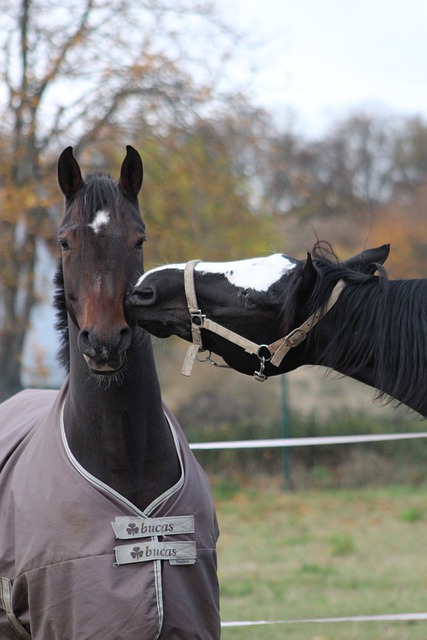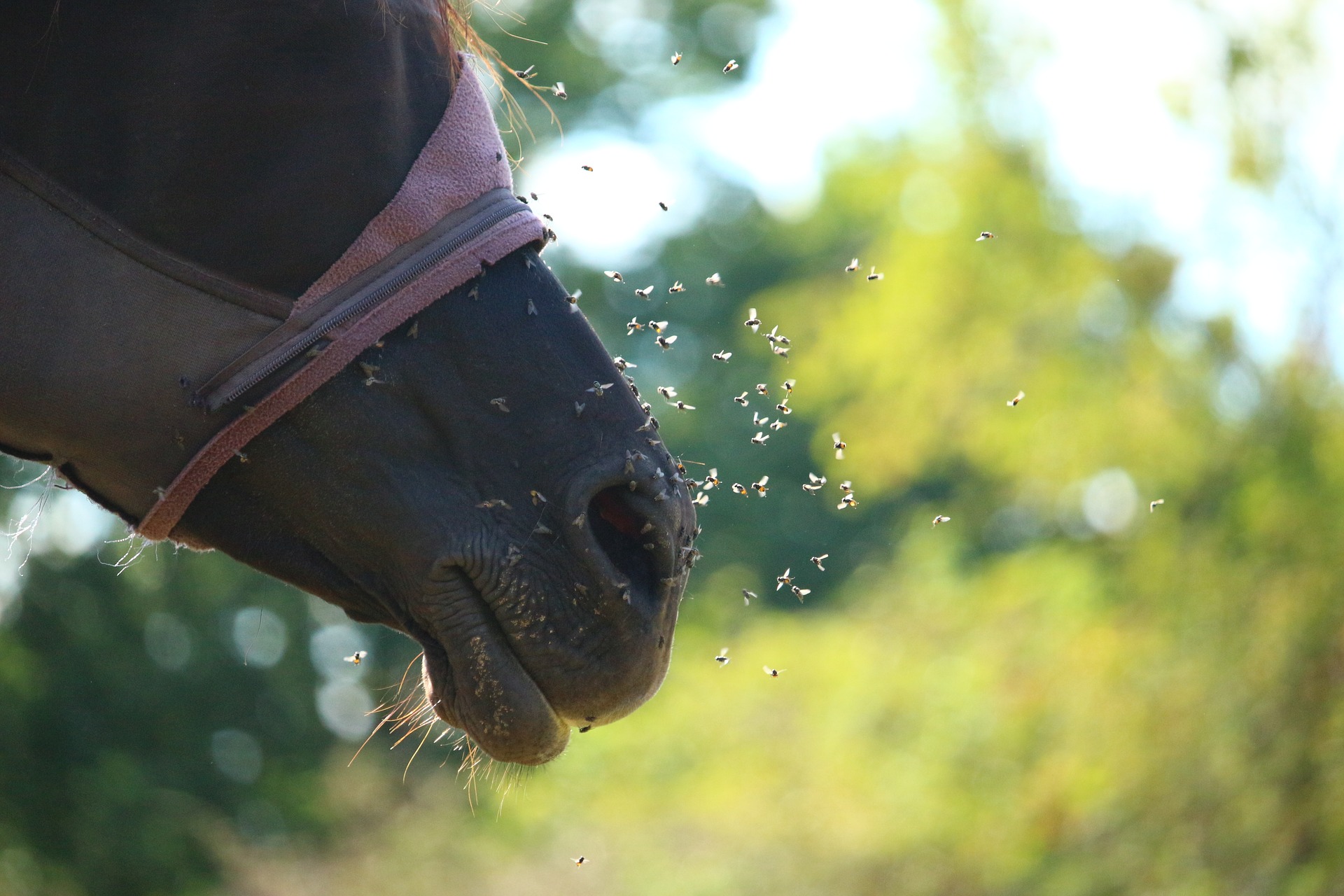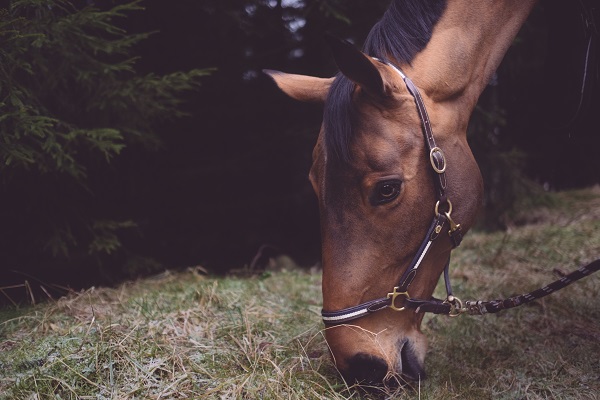Laminitis in Horses – What Causes It, Symptoms and Treatment
Laminitis, commonly known as founder, is a painful disease that causes severe lameness in horses.
It can often cause lameness in two, or all four feet at one time, but it is preventable.
In this post, we’ll go over what laminitis is, what causes it and how to prevent it.

Anatomy of the Hoof
Before we can discuss laminitis, we must first have a basic understanding of the anatomy of the hoof.
At the very tip of the foot is the coffin bone – the triangularly pointed bone labeled as “C” in the image above.
The coffin bone is secured to the hoof by a layer of interconnected sensitive laminae and insensitive laminae.
This construction is like a cake – from outside-in the layers go: 1. hoof wall, 2. insensitive laminae, 3. sensitive laminae, and 4. coffin bone.
However, woven between the insensitive and the sensitive laminae is a network of blood vessels.
The laminae are alive, and constantly regenerating and need a source of blood flow.
What is Laminitis?
Laminitis, then, is the inflammation of the laminae (-itis being the suffix indicating inflation).
At the microscopic level, bacterial endotoxins and lactic acid are released into the bloodstream.
This dilates the large arteries to the feet, but constricts the small capillaries that feed the laminae.
Deprived of blood and oxygen, the laminae swell and, over time, begin to die.
Generally speaking, your vet may categorize your horse into acute laminitis or chronic laminitis:
Acute laminitis usually refers to the first (and possibly only) laminitic episode your horse may have.
Chronic laminitis includes the damage caused after the initial attack, and any laminitic episodes that happen after the first one.
What Causes Laminitis in Horses?
There are several causes of laminitis, but the primary cause is a sudden increase in carbohydrates in the horse’s diet.
This is often seen when a horse breaks into a sweet feed bin and gorges himself, or a pony is given free-reign on a young Spring pasture.
Ponies are known for being “easy keepers” – meaning they will over-indulge in all the food they can get and put on weight easily.
In the Spring, grasses are full of more sugar than they are fiber, so a pony who is allowed to eat all the Spring grasses he can manage is at a greater risk for laminitis.
There are several other causes of laminitis, however – excessive exercise, lack of exercise, other vascular diseases, excessive weight-bearing on one leg, and improper shoeing.
Excessive exercise – or concussion – on the structure of the hoof, for example, in endurance competitions or (in the past) military exercises can caused increased blood flow and swelling to the laminae.
If the horse is gradually worked up to a high level of exercise, laminitis won’t occur.
Since there are no muscles below the knee and hock of the horse, the compression of the frog actually helps in circulation and pushes blood back up the leg.
If not enough compression occurs, the hoof becomes swollen with blood that has no where to go – resulting in laminitis.
If a horse is lame in one of his other feet, he will put more weight on the healthy foot to avoid pain.
Just as in the situation above, if this goes on for a long time, it can cause the healthy foot to become congested and lead to laminitis.
Symptoms of Laminitis in Horses
Laminitis is very painful, so initially you will notice your horse is very uncomfortable.
If his front two feet are affected, he may rock back to remove some of the weight on his front feet.
If all of his feet are affected, he may prefer to lie down.
This is not always a bad thing, if you take care to turn him frequently from side to side to avoid too much pressure or accumulation of fluids.
Your horse will sweat, his temperature will be elevated, and he will be in considerable pain.
The hoof or coronet band may feel hot to the touch. He may have diarrhea, a fast pulse and rapid breathing.
The artery at the fetlock may exhibit a pounding pulse.
All of these are good indications that your horse has laminitis.
Complications of Laminitis
If the swelling is bad enough, and the inflammation has nowhere to go, the structures supporting the coffin bone may give way and the coffin bone itself can rotate down.
In extreme cases, it may puncture out of the bottom of the hoof.
This rotation of the coffin bone can occur as early as 48 hours after the onset of laminitis or may not occur for several weeks.
In all cases of laminitis, there is an increase in temperature of the laminae (as a result of the inflammation) and increase in liquid (blood).
This is the ideal environment for bacteria, and some cases of laminitis can result in an infection of the laminae.
In severe cases the entire hoof may slough off over time as a result of the complete death and separate of the sensitive laminae.
How to Prevent Laminitis in Horses
The easiest and surest way is to lock up your sweet feed behind a door with a lock.
I’ve seen horses open doors, open the lid to the feed bin and perform miracle acts to get at that sweet feed.
Make sure it’s impossible.
If your horse does eat too much sweet feed (usually over 25 lbs or so), keep a close eye on him.
Laminitis won’t occur for 12-18 hours after the grain has been eaten.
In the Spring, limit the amount of time your horse spends on the fresh pasture to allow his system to gradually acclimate to the sweet new grasses.
Or, if management of his turn out isn’t possible, purchase a muzzle.
We like these Grazing Muzzle with Halters from Horse.com because they’re super durable and you can throw them in the washing machine!
What to Do If You Suspect Your Horse Has Laminitis
Call your veterinarian right away.
Remove all sources of feed right away – if they are outside, bring them in.
If they’re inside, remove all hay and feed from their stall. Your vet will be able to advise on how and when best to reintroduce food.
To make your horse more comfortable, try adding additional bedding – shavings are preferred to straw because the horse won’t be tempted to eat them.
What to Expect After Laminitis
Once your vet and you have successfully supported your horse through the worst of the acute laminitic attack, your next step should be to call your farrier.
Since the rotation of the coffin bone may not be seen for a few weeks, you, your vet and your farrier will work as a team to take x-rays and monitor your horse for signs of coffin bone rotation, white line disease, bruising or tenderness.
There are several corrective shoeing techniques your farrier can use to alleviate the pressure on the sole of the hoof (where the coffin bone may be pushing against it) while the hoof heels.
Here’s an example of an Arabian with a slight coffin bone rotation, and one farrier’s corrective shoeing:
One last note about laminitis: as the hoof begins to grow out, your horse will have noticeable rings around the hoof wall.
Keep this in mind when you’re looking to buy a horse as well as this is an indication that they have had a laminitic episode before and may need a special diet.
For a complete list of things to look out for when buying a new horse, check out our post: Questions to Ask When Buying a Horse.
Sources:
Veterinary Notes for Horse Owners: A Manual of Horse Medicine and Surgery


